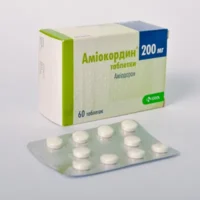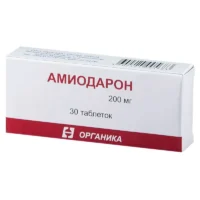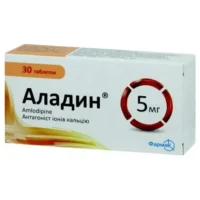Description
Triductan (Trimetazidine) Coated Tablets 20 mg. №30
Ingredients:
- Each coated tablet contains 20 mg of trimetazidine dihydrochloride as the active ingredient.
Dosage:
- The recommended dosage is one 20 mg tablet taken orally twice daily, preferably before meals.
Indications:
- Triductan tablets are indicated for the treatment of stable angina pectoris.
- It helps improve exercise tolerance in patients with angina by optimizing myocardial metabolism.
Contraindications:
- Do not use Triductan tablets in patients with severe renal impairment, Parkinson’s disease, or during pregnancy and lactation.
Directions:
- Swallow the tablet whole with a glass of water. Do not crush or chew the tablet.
- Follow the dosage instructions provided by your healthcare provider.
Scientific Evidence:
- Trimetazidine, the active ingredient in Triductan tablets, has been extensively studied for its efficacy in the treatment of angina pectoris.
- Research published in the European Heart Journal has shown that trimetazidine improves left ventricular function and reduces angina symptoms in patients with stable angina.
Additional Information:
- It is important to inform your healthcare provider about any other medications you are taking before starting Triductan tablets.
- Monitor for any signs of adverse reactions and seek medical attention if any occur.
Triductan works by shifting myocardial metabolism from fatty acid oxidation to glucose utilization, which helps preserve energy in the heart muscle during ischemic episodes. This mechanism of action makes it a valuable addition to standard angina treatment regimens.
Clinical trials have demonstrated the effectiveness of trimetazidine in reducing the frequency of angina attacks and improving exercise capacity in patients with stable angina. Its favorable safety profile and minimal side effects make it a preferred choice for long-term angina management.





